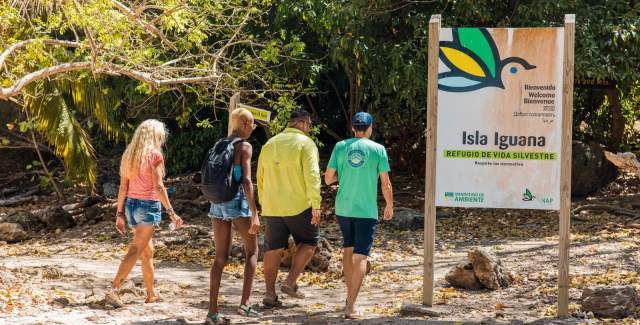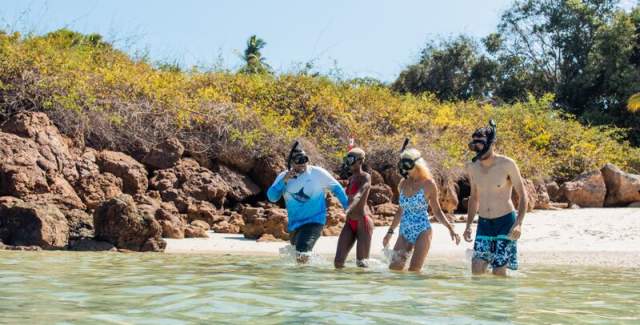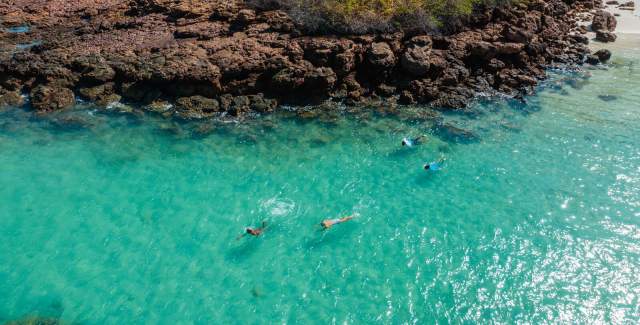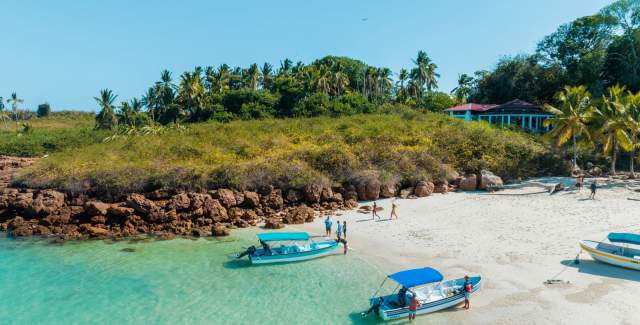Dive & Snorkel in Pedasi, Cambutal & Venao
If you're a lover of underwater life, then get ready for an exciting adventure on your trip to Panamá. Don't miss the opportunity to explore Pedasi and Tonosi, two hidden gems that will open doors to an underwater world full of surprises. Dive into Isla Iguana to discover a breathtaking marine treasure, explore the sunken ship at Guanico, and admire the vibrant coral patches at Destiladero. An unforgettable underwater experience awaits you!

Isla Iguana
This more than 58-hectare (142-acre) refuge is home to birds, iguanas, and hundreds of crabs and hermits. In addition to two beaches: El Cirial and El Faro, linked by a short path in the middle of the jungle.

For those who want to explore sea life, the true charm of Isla Iguana is under its turquoise waters. This island paradise is surrounded by more than 40 hectares (99 acres) of reef made up of 17 species of coral.
For starters, the best place is the lagoon in front of El Cirial beach, which is surrounded by a reef wall. With a simple piece of snorkeling equipment you'll be able to see corals and hundreds of colorful fish. In this area, the sea can drop up to 6 meters at low tide, and some of the coral can be very close to the surface, so you must be very careful not to hurt yourself. Always swim parallel to the reef and in the direction of the current.

Swim Over Coral Patches
If you want to continue the adventure, the coral patches of La Pororoca and El Joron are also very good scenarios, as the water is very calm and you'll be able to see quite a few fish.
Las Palmitas will surprise you with its colors and without worrying about the currents. Los Hongos has a very wide coral patch that you can enjoy with your snorkeling equipment. And finally, Caña Brava and Las Piedras, we leave these locations for those with more experience, as they have somewhat strong currents.
In addition to Isla Iguana, you can visit Achotines and Puerto Escondido, other snorkeling spots in the area. In both you'll find very large and varied colonies of soft corals. And, if you're really curious, ask about the Taboga shipwreck, a ship that sank in the early 20th century around Guanico, 12 miles (20 km) from Tonosí. It's a real secret among experts, as it doesn't appear in guidebooks.

When to Go
The rainy season, from April to November, is the most recommended, as the Pacific is quite still, which gives you greater visibility underwater.

Also, between August and September it is very possible that you'll be able to see humpback whales while traveling by boat.
The winds of the dry season, from December to early April, can make it difficult to access Isla Iguana and your snorkeling experience. But don't be discouraged, these months are great to visit surfing beaches, participate in community tourism, sea turtle conservation or learn about the culture and folklore of the center of the country.
If you love marine life and are a snorkeling enthusiast, Pedasi y Tonosi are the ideal ports to reach marine life refuges that will surprise you.





